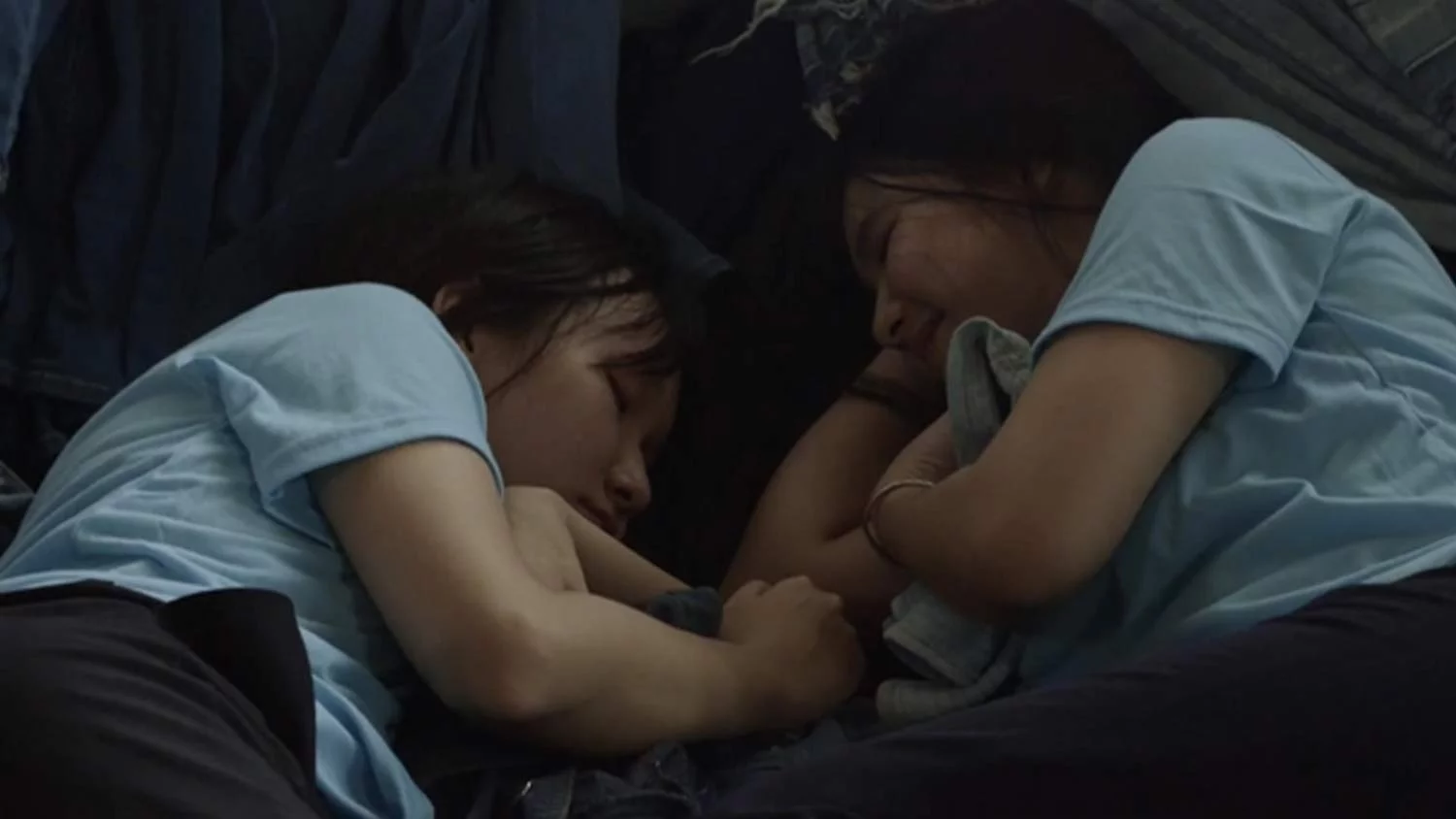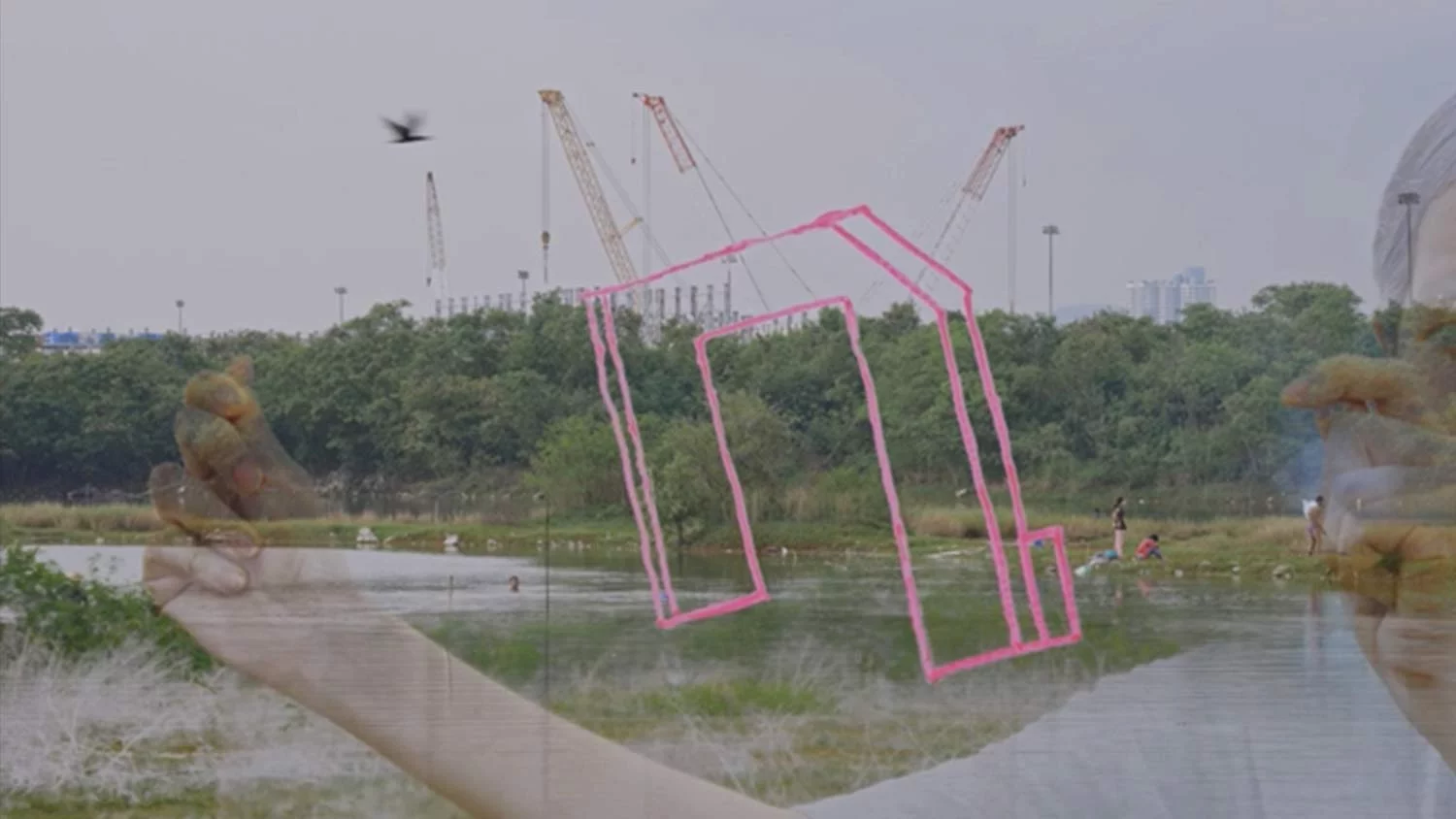Here, at the Fraying Edge: On Marginality
By Tracey Toh

Beyond the current of the mainstream, the margins exert a pull of their own. Always defined in relation to the normative, the margins throb with wounds, yearnings and affiliations, forming alternate centres of gravity.
In the dark of a movie theatre, we are reeled in all the more easily. Many films across the Southeast Asian Short Film Programme bring the peripheral into sharp focus. In particular, Bagan, Ghost of Phukang, Elephants in the City and Notes from the Periphery train our attention on the fringes of countries, cultures and communities.
These works not only bear witness to those who inhabit the margins, but probe the very condition of marginality. What does it mean for lives to be ordered by spatial boundaries and social hierarchies, and how does power flow through such structures? How can films resist the dominant forces of the state, of mass media and capitalism?
Bagan
A film can invite us to linger where others have left. For the Orang Seletar of Johor, the threat of displacement and obsolescence looms constantly, amidst a rapidly urbanising Malaysia.
In Bagan: Sudden Uncertainty, the protagonist Frankey (Frankey Asiang) is alienated by multiple factors: he is indigenous, a child, and has no formal schooling. Hanging on the sidelines, Frankey is prone to bursts of impotent rage when he has no comeback to the other kids’ derision. Illiterate, he stares hard at eviction notices, trying to penetrate their meaning. Disoriented by the news of his best friend, Gamat, moving away, he struggles to respond.
But while Frankey chafes against the void where language should be, the filmic, and fictional, intervention gives expression to his inner turmoil.
Without words, the physical self becomes more pronounced in its articulation. Throwing Gamat’s toy into the sea is a cry of frustration. Retrieving that toy, and defending Gamat from bullies, forms the syntax of unshakeable affection. Sitting together, shirtless, constitutes the grammar of ease. Through Asiang’s subtle performance, exclusion and belonging turn into embodied experiences.

As the camera follows his every gesture, we see that Frankey’s personal lexicon, and by extension, his identity, is mapped onto the topography of his coastal village. His bedroom, where he pieces together bits of discarded textbooks and commits the salvaged scraps to memory, becomes a woefully inadequate, self-devised classroom. Roads, through which the school bus and state officers arrive, are conduits of an encroaching modernity.

The shore is perhaps the only place that is truly his. At their beloved spot by the beach, the boys unearth and share cigarettes stolen from Frankey’s grandmother. It is their private rebellion, a rehearsal of adulthood and an exercise of autonomy. Against the indifferent tides of dislocation, companionship offers an antidote, an emplacement, an anchor.
Ghost of Phukang
In another village, the spectre of modernity hovers too. Ghost of Phukang opens on a community that has recently been possessed by an unknown spirit.
A dynamic between the urban and the rural unfolds through the voiceover, a phone call between a mother and her son, who has presumably left the village. Since his departure, this strange phenomenon has taken hold of the inhabitants, rendering them cataleptic. The streets have emptied out and even children have fallen silent. Everyone has abandoned their inner purpose, nodding off in the middle of daily tasks. The mother wonders if this is a quarantine-induced inertia, or the wrath of deities to whom merit is owed, or simply the result of a weak mind and lack of exercise.

Why the ghost has come remains ambiguous, but the effect it has on the village is clear. Lulled into a trancelike state, the possessed tune in to music game shows, their routines aligned to the rhythms of a media cycle. The cessation of activity, like the depopulation of rural areas, leaves a vacuum that admits the influx of a homogenising urban culture. In one scene, a man stands in the street, in thrall to the flicker of electric streetlights, fascinated by the technological progress it represents.

Bodies are hijacked, hollowed out and made receptive to cultural products from the city. No one, it seems, can fully escape. At the close of the film, the mother settles down to a television programme, as it blares “Siam, Land of Smiles”. Lit by the glow of the television, she falls asleep, as if finally succumbing to this overt, aggressively upbeat, propaganda.
Still, there may be something more at work than the penetration of mass entertainment into the most rural corners of a country, and its numbing of our senses. To call this a possession is to suggest the permeability of the self, its susceptibility to the zeitgeist, or the reigning spirits of the day. Even at the margins, the self is a potential sphere of influence and therefore, a site of contestation.
Elephants in the City
While media flows outwards from the centre, in search of tractable minds, human bodies tend to travel in the other direction.
From its title, Elephants in the City presents zoo animals as a metaphor for the life of migrant workers — always roaming, never going anywhere. The film follows several migrant labourers, as they shuttle endlessly between the industrial cities of Vietnam and their hometowns, seeking a point of rest.

Surrounded by the relentless drone of machinery, other bodies can provide comfort. The women at a denim factory wrap their arms around each other as they walk. They nap beside fellow workers during snatches of break time, atop the heaps of jeans. Sleeping together, platonically or sexually, is shown to be an act of radical tenderness. Away from her husband and daughter, a teacher has a casual affair with a worker from a shoe factory. The camera stays on them in a long take, as they chat, smoke and mark papers in his cramped room, barely big enough for a bed. Having little else, he presents her with a gift of stolen shoes.

Turning jeans into makeshift beds, or stealing shoes and then repurposing them as offerings of friendship, takes these objects out of a purely capitalist economy. Jeans and shoes, so painstakingly manufactured, are not just consumer goods, but accrue other, more creative, meanings. In this improvisational manner, the workers reclaim the products of their labour.
As they form loose affinities between themselves, they also reconfigure labour relations. Placing no further demands on already exploited bodies, they recognise that they may be coming together only for the time being. All the same, the joy and necessity of connection cannot be denied. Reaching toward each other, the workers come alive to their desires, refusing to let their bodies become mere instruments.
Notes from the Periphery
If the marginal body is a locus of resistance, Notes from the Periphery makes the case that all margins are themselves unstable, given to transgression.
Any boundary we impose will inevitably shift, a message inspired by Laem Chabang, the biggest port in Thailand, one that is ever-expanding. Part of the transnational shipping route, Laem Chabang is testament to the morphing of borders in an age of global trade. The lines that demarcate the centre from the periphery are continually being redrawn.

All frames, including the discrete frames that comprise a film, inevitably fail to contain our lived experience of place. The documentary makes prolific use of double exposures, allowing one image to leak into another. As a hand traces the rough outline of an area, another scene starts to bleed in, asserting its reality. Eventually, random outlines are held up, completely misaligned to the background. The film revels in this striking disjunction, in the play of contrasts.

In another cheeky juxtaposition, a sign prohibiting fishing is overlaid with a shot of a person doing precisely that, setting the human activity in direct defiance of the regulations. Splicing these scenes together points to the arbitrary nature of rules, how they are almost an invitation to trespass. The integrity of any parameter, or perimeter, is always threatened, and we may as well enjoy it.
To navigate the flux of contemporary life, we just have to stay afloat — a strategy intimated by the narrator, who rattles off a litany of words with the suffix “-ship”. A range of divergent concepts are united only by the fact that they all describe impermanent states. Our understanding of “citizenship”, along with “kinship”, “scholarship” and “dictatorship”, will change with the tilting axis of power.
Even the life cycle of a barnacle, narrated through voiceover, serves as a warning against stasis. An emblem of marginality, the barnacle drifts in search of something larger to latch on to. But, cementing itself to a structure, the barnacle only accelerates its collapse.
In holding space for what is usually out of sight and out of mind, these films insist on the significance of the otherwise neglected.
Yet, they do not seek so much to assimilate the marginal into the mainstream, as to trouble the lines that govern the margins and locate in the motions of life a source of subversion. Though authority is enforced over marginalised bodies, these same bodies — precarious, porous and rife with possibility — unsettle power relations and prove them mutable.
Here, then, is a cinema that dwells at the edge, tugging at its fraying seams.